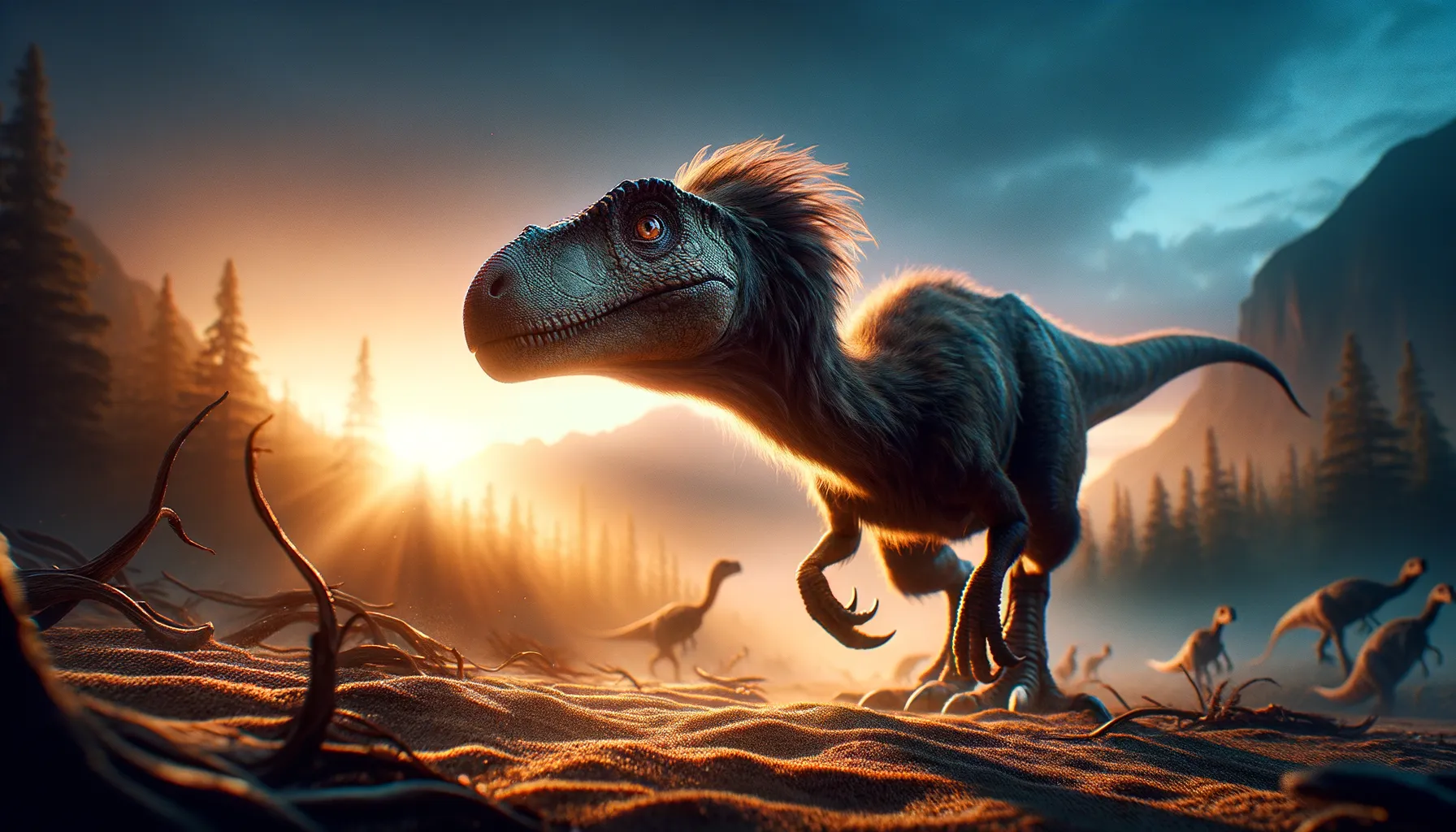
Liaoningvenator
Swift and nimble predator of ancient times.
Period
Cretaceous
Length
Roughly 3 feet long.
Height
About 1 foot tall at the hip.
Weight
Approximately 15 pounds.
Liaoningvenator was a small dinosaur discovered in China, known for its bird-like features and moderate speed. It lived during the Cretaceous period and provides insight into the evolution of theropods. The discovery of its fossils helps paleontologists understand the diverse lifestyles of small predatory dinosaurs and their adaptations in the environment they inhabited.
Diet
Liaoningvenator was likely a carnivore, preying on insects and small animals. Its sharp teeth and agile body made it efficient in hunting.
Hunting
This dinosaur used its speed and agility to catch its prey. It might have relied on ambush tactics, using the cover of vegetation to surprise smaller creatures.
Environmental challenges
Liaoningvenator faced challenges like fluctuations in climate during the Cretaceous. Availability of food varied, pressuring adaptation in hunting strategies. Competition with other predatory dinosaurs shaped its survival tactics and behavior, sometimes leading to confrontations over territory or prey.
Speed
Moderate runner for its small size.
Lifespan
Lived for a few decades like many small dinosaurs.
First discovery
Unearthed in Liaoning Province, China in 2017.
Fun Facts
- Liaoningvenator was a small, bird-like dinosaur that lived around 125 million years ago during the Early Cretaceous period.
- Its name, Liaoningvenator, means 'Liaoning hunter,' named after the Liaoning Province in China where its fossils were found.
- This dinosaur was a member of the Troodontidae family, known for their intelligence and keen senses.
- Liaoningvenator was about the size of a small dog, making it one of the smaller dinosaurs in its group.
- It had long legs, which suggests it was a fast runner, possibly hunting small prey or escaping predators.
- The fossils of Liaoningvenator were discovered in a region famous for its well-preserved feathered dinosaur remains.
- Researchers believe that Liaoningvenator may have been warm-blooded, similar to modern birds and mammals.
Growth and Development
Young Liaoningvenators likely grew rapidly to reach maturity quickly, a common trait in small dinosaurs. This quick growth helped them evade predators and compete for resources. Parental care might have been present, ensuring offspring survival in a competitive environment. Juveniles had to learn essential survival skills early on.
Habitat
Liaoningvenator lived in a forested environment with plenty of cover and resources. The region was rich in lakes, providing a suitable climate and ecosystem. Its habitat supported a diverse range of smaller animals, which served as its prey. Vegetation provided both hunting grounds and protection.
Interaction with other species
Liaoningvenator shared its habitat with other small dinosaurs and early mammals. Its presence influenced local ecosystems, maintaining a balance in the small-predator community. Occasionally, it faced competition from similar predators for the same prey. Observing others helped shape its hunting techniques and social interactions.
Natural lifespan
In its natural environment, Liaoningvenator likely lived up to 20 years.
Reproduction
Liaoningvenator likely reproduced by laying eggs, similar to other theropods. Nest sites were probably chosen in safe, concealed areas to protect against predators. There might have been some level of parental care, ensuring the young reached maturity. Reproductive cycles could have been influenced by environmental factors.
Social behaviour
This dinosaur may have been solitary or lived in small groups. Cooperation in hunting or foraging might have occurred among individuals. Communication through vocalizations or body language could have played a role in social interactions. Social structures, if present, were likely influenced by environmental pressures and resource availability.
Fossil locations
Fossils of Liaoningvenator have been discovered primarily in Liaoning Province, China. The site is known for yielding well-preserved dinosaur fossils. These discoveries provide crucial insights into its biology and ecology. Continued excavation in this area may reveal more about its life and times.
